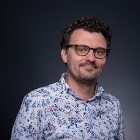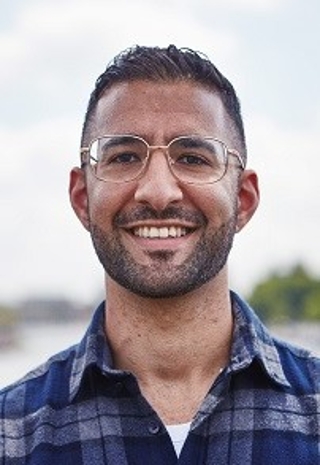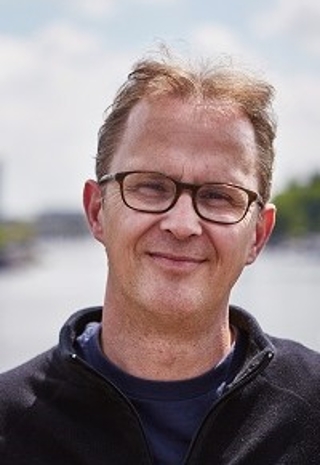
How to find that one broken lamppost
Using digital technology to create a map of Amsterdam
At the Amsterdam University of Applied Sciences (AUAS), we work with organisations and companies on the major social issues of today and tomorrow: sustainability, digitalisation and diversity. As good as that sounds, what does it actually mean?
How can you use digital technology to make better decisions about managing streets, roads and buildings? A state-of-the-art pilot project is being carried out in Amsterdam, made possible partly by the AUAS.
Student in the Data Science minor Boerzo Ali has spent the past year researching how to use a 3D scanner to provide tangible help to the City of Amsterdam. This LiDAR scanner uses laser pulses to create a three-dimensional image of the built environment in real time.
Tangible application
“I built a kind of back end that the municipal authority can use to analyse the area for broken lampposts,” Ali explains about how he used the technology. “This makes it much easier and less expensive for the municipal authority to identify where maintenance may be required in the city.”

Smart Asset Management combines algorithms and data. This way, better decisions can be made for the maintenance of machines and buildings. LiDAR is a technology that makes all this possible, explains AUAS researcher and lecturer in the Data Science minor Jurjen Helmus. “We can use this in a very tangible way, for example, to identify broken street lights, and we also use LiDAR for maintaining road markings, stairs and quay walls.”
The AUAS focuses on practice-based research. “We implement existing algorithms in practice. We are now also doing this with the LiDAR scanner and the management of buildings, for example. By applying these 3D data and algorithms usefully for Smart Asset Management we are on the right track. Because these data and algorithms have not been used for maintenance and management up to now.”
A bike full of sensors
Of course, to create a digital map of a city, you need physical coverage in that city. That is provided by Fietskoerier [‘Bicycle Courier’], the company owned by Willem Schellekens and Sjoerd van Eerdt, which delivers parcels in Amsterdam. Fietskoerier also initially came up with the idea of helping the City of Amsterdam with Smart Asset Management. “They wanted to equip their bikes with sensors and cameras, but the problem with an ordinary camera is that a lot of things don’t get registered,” Helmus explains. “A characteristic of a broken street light is that you can’t see it in the dark. Sometimes you want to look at something you can’t see, because it’s broken. LiDAR can help with that.”

LiDAR creates a 3D map of the world down to the millimetre, which makes it ideal for inspections. Ali therefore teamed up with Fietskoerier to figure out how they could incorporate this technology into the delivery bikes used by their couriers. “We set up a project to select lampposts based on the data collected and see whether they are broken or not.”
André Kapitein is the CEO of IT start-up Sonarski. LiDAR is one of Sonarski’s focus areas. By working together with the AUAS – in the Data Science minor for example – Kapitein can ensure that technologies such as LiDAR are tested and optimised in practice, thus becoming interesting for Sonarski’s customers. For students like Ali, it is a great opportunity to apply their knowledge in practice. “There are huge prospects for students,” according to project leader Helmus. “If you work with the technology of the future, you are a good and sought-after student by definition.”

Cutting-edge technology
Ali is very enthusiastic about the minor he took. “This minor made it all happen for me. It helped me understand that I want to continue in Data Science and make it my job.”
Kapitein, too, sees only advantages. “We have the equipment and we have enough customers, but it’s also important that there are people who can use our equipment. That’s the beauty of working with the AUAS. It is very common for graduates to end up working for one of our partners.”
Meanwhile, Boerzo Ali is busy finishing up his studies and has just completed his internship at Kapitein’s company. “I’m very happy that I was able to work with real cutting-edge technology during the minor. I think it would be really cool to continue with that.”
